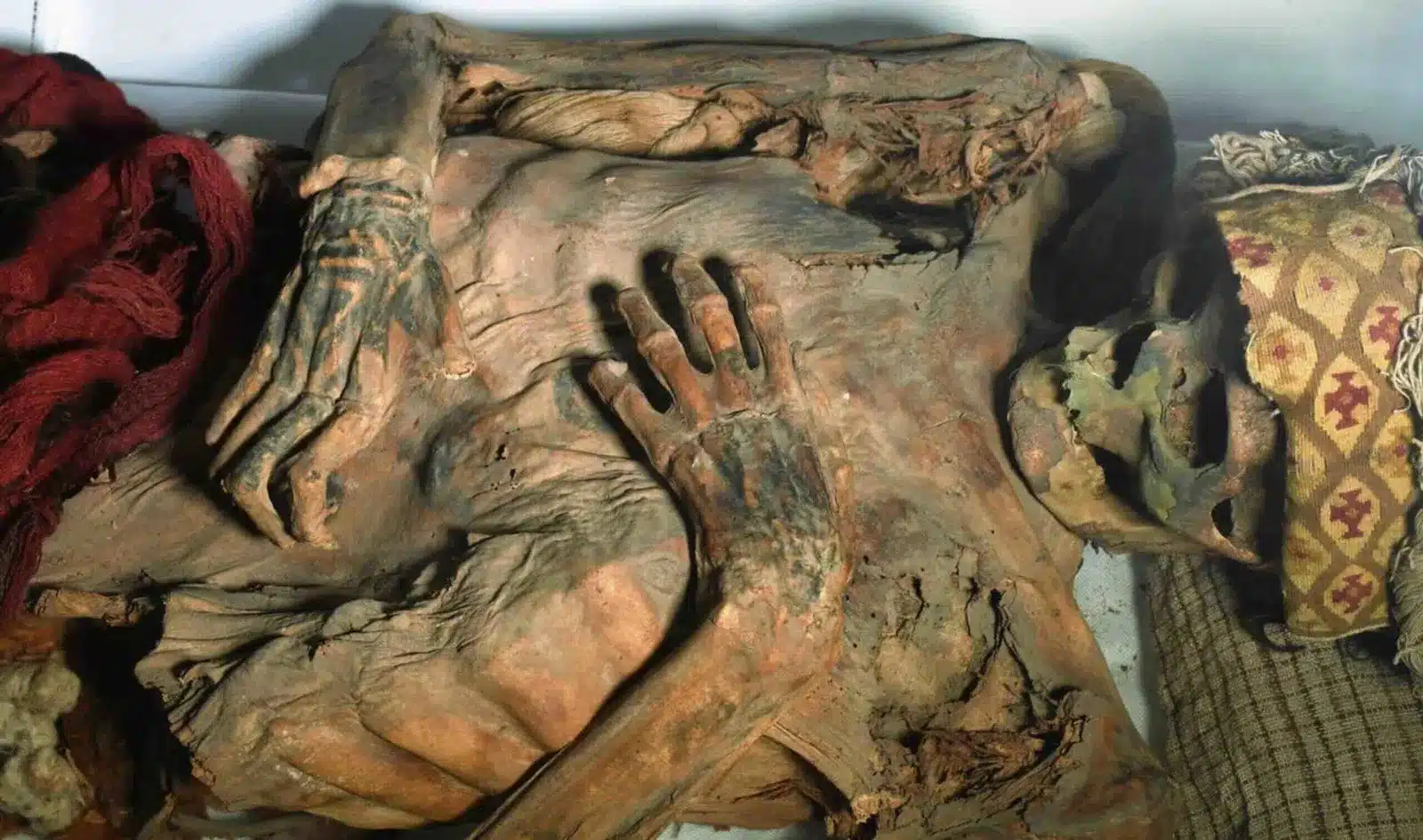Ancient Tattoos Revealed: A Glimpse into Chancay Culture

Recent advancements in laser-based imaging technology have unveiled intricate tattoo designs on 1,200-year-old mummies from Peru’s Chancay culture. These tattoos, which had faded over centuries, are now visible in remarkable detail. This discovery highlights the artistry and skill of ancient tattooing practices. Researchers examined over 100 mummified remains and found three individuals adorned with tattoos featuring fine lines measuring just 0.1 to 0.2 millimeters in thickness. This precision showcases the talent of tattoo artists from that era and offers a unique insight into the cultural significance of body art in ancient Peru.
Technique Used in the Study
The research, published in the Proceedings of the National Academy of Sciences (PNAS), utilized a method known as laser-stimulated fluorescence (LSF). This innovative technique makes the skin fluoresce in bright white, creating a stark contrast with the black ink of the tattoos. As a result, the designs become clearly visible, allowing researchers to study them in detail. Traditional examination methods often struggle with issues like ink bleeding or fading over time. LSF effectively eliminates these problems, providing a clearer view of the tattoos.
Researchers noted that this method could revolutionize the way ancient tattoos are studied. By using LSF, they can uncover details that were previously hidden. This advancement opens new avenues for understanding the tattooing practices of ancient cultures. The ability to visualize these intricate designs allows for a deeper appreciation of the artistry involved. As researchers continue to explore this technology, they may uncover even more about the lives and customs of the Chancay civilization.
Tattoo Patterns and Cultural Significance
The tattoos discovered on the mummies feature geometric shapes, including triangles and diamond motifs. These patterns closely resemble those found in Chancay pottery and textiles, suggesting a strong cultural connection. Michael Pittman, a paleobiologist at The Chinese University of Hong Kong, noted that vine-like and animal designs were also present. These motifs may have held significant meaning for the individuals who wore them.
Archaeologist Kasia Szremski from the University of Illinois Urbana-Champaign emphasized that tattoos often serve as markers of status or identity in many cultures. In the context of the Chancay civilization, these tattoos could have represented social standing or personal beliefs. The artistry involved in creating these tattoos reflects the cultural values and practices of the time. As researchers delve deeper into these findings, they hope to uncover more about the significance of tattoos in ancient Peruvian society.
Debate Over Methodology and Findings
Despite the promising results of the LSF method, some experts express reservations about its effectiveness. Aaron Deter-Wolf, an ancient-tattoo expert with the Tennessee Division of Archaeology, raised concerns about the study’s methodology. He noted that the research did not provide sufficient details to prove LSF’s superiority over existing techniques, such as infrared or multispectral imaging. Deter-Wolf also questioned the interpretation of the tattooing techniques described in the study, suggesting that the tattoos were likely made through incisions rather than puncture methods.
This debate highlights the complexities of studying ancient tattoos. While LSF offers new possibilities, it is essential to critically evaluate its findings alongside traditional methods. The discussion surrounding the methodology underscores the need for continued research and collaboration among experts in the field. As more studies are conducted, a clearer understanding of ancient tattooing practices may emerge, enriching our knowledge of cultural history.
Museum Collections and Future Potential
The findings from this study emphasize the importance of re-evaluating museum collections using advanced technology. Szremski pointed out that many artifacts, including mummies, may hold untapped potential for revealing historical insights. While the precise meaning of the tattoos remains unclear, the designs provide a fascinating glimpse into the craftsmanship and cultural practices of the Chancay civilization.
Researchers believe that the LSF technique could further illuminate tattooing methods and artistry across various ancient cultures. As technology continues to evolve, the potential for new discoveries grows. This research not only enhances our understanding of the Chancay culture but also encourages a broader examination of body art in historical contexts. The future of archaeological studies looks promising, with advanced imaging techniques paving the way for deeper insights into our shared human history.
Observer Voice is the one stop site for National, International news, Sports, Editor’s Choice, Art/culture contents, Quotes and much more. We also cover historical contents. Historical contents includes World History, Indian History, and what happened today. The website also covers Entertainment across the India and World.
Follow Us on Twitter, Instagram, Facebook, & LinkedIn

